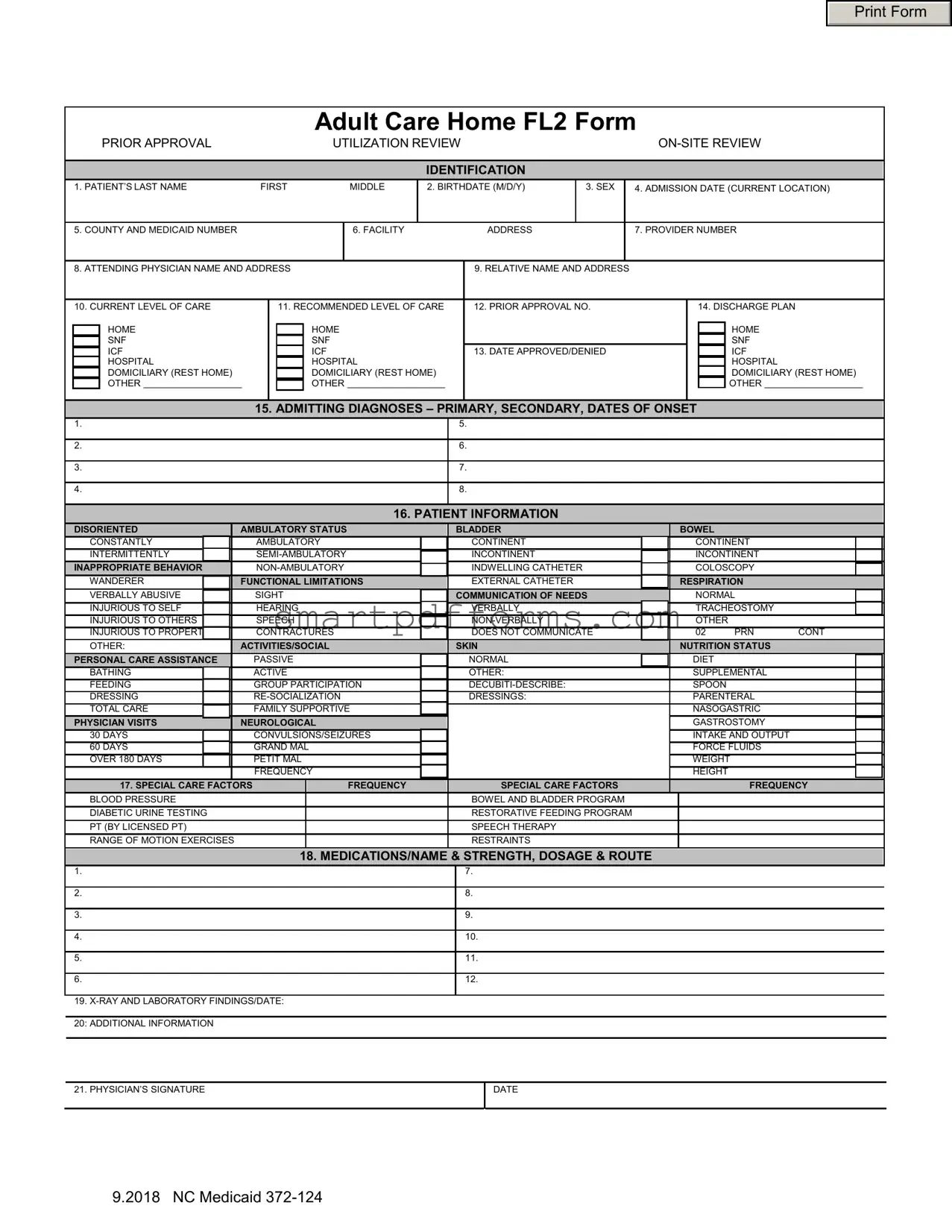Navigating the landscape of Adult Care Home admissions and ongoing care evaluations can be intricate, as evidenced by the comprehensive details outlined in the North Carolina Adult Care Home FL2 Form. This document is pivotal for health care professionals, patients, and their families, serving as a bridge for communication and ensuring the alignment of care needs with suitable facilities. Covering a wide range of sections, the form captures essential patient information right from basic identification details to the nuanced assessment of current and recommended levels of care. It’s a tool for prior approval, utilization review, and even on-site review processes. The patient's health status, including admission diagnoses, functional limitations, and special care needs, are meticulously documented alongside details of the admitting physician, patient's facility, and the primary contact relative. Medication lists, nutritional needs, and even social engagement capabilities are thoroughly assessed. This form is an essential piece of documentation for managing a patient's transition into, or continuation within, an adult care home setup, ensuring that every facet of their care requirements is appropriately coded and acknowledged for both caregivers and administrative purposes alike.

